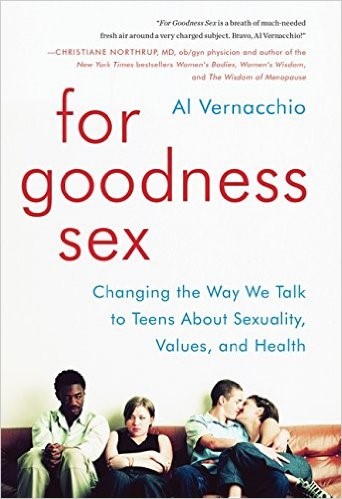Where Do Babies Come From?
- 333996
- 1950
This video describes the process by which sperm and eggs come together to create a baby. It goes over the menstrual cycle and how sperm travels through semen. The video also describes how sperm gets into the vagina through sexual intercourse and defines contraception (when you want to stop sperm from reaching the egg because you do not want to get pregnant). It also mentions other methods of getting pregnant other than sexual intercourse. The video defines a zygote and describes how if the zygote does not find a good nesting place, it passes out of the body during period. If does find a nesting place, this is when pregnancy begins. Finally, the video defines trimesters, womb, and when a fetus is considered full term. It explains that birth can happen through a vagina or through cesarean section (c-section). [AMZ-022]
Youth
Do you REALLY know where babies come from? There are lots of myths out there about how a person can and cannot become pregnant, so it’s important to know the facts.
When a guy goes through puberty, his testicles begin to make sperm. When a girl goes through puberty her ovaries start to release an egg about once a month. Once a guy produces sperm and a girl produces eggs, if they were to have unprotected sex with each other, their bodies could reproduce or make a baby. That’s why it’s so important to know how pregnancy happens. Going through puberty does not mean you are ready to have a baby, but it’s good to understand how pregnancy happens and how to prevent it.
When a male and female are very attracted to each other, they may decide to have sexual intercourse. The male’s erect penis is placed into the vagina. If the penis releases semen (a process called ejaculation) in the vagina or on the vaginal opening, then semen can get into the vagina. Semen contains sperm, and if the female has released an egg from her ovary (a process called ovulation), one of those sperm could unite with the egg and begin the process of reproduction.
There are a lot of myths out there about if, how, and when someone can or can’t get pregnant. The truth is, once you start to go through puberty, it’s possible to get pregnant or to get someone pregnant. That’s why it’s so important to know how pregnancy happens and how to prevent it if you or your partner are not ready.
For a pregnancy to form, a sperm and an egg have to join, which usually happens through sexual intercourse. However, there are lots of ways that people form families. For example, some people adopt babies and some people have two moms, two dads or just one parent.
Parents
Many people hear myths and misconceptions about how their bodies work, including ways a person can and cannot become pregnant, so it’s important young people have medically accurate information about their bodies and how pregnancy happens. Additionally, knowing the correct anatomical terms for body parts can help young people understand pregnancy and reproduction, set boundaries with other people and effectively communicate with their parents/guardians and health care providers.
Parents can talk with their children about puberty, including how the testicles begin to produce sperm and how the ovaries begin to release an egg about once a month. Young people should understand that going through puberty means that if they were to have unprotected penile-vaginal intercourse, they could now get pregnant or cause a pregnancy.
When young people have an understanding of puberty and basic reproductive anatomy, parents or guardians can explain that penile-vaginal intercourse is when an erect penis is placed in a vagina. If the penis releases semen (a process called ejaculation) in the vagina or on the vaginal opening, and the ovary has released an egg, then a single sperm in the semen could unite with an egg and begin the process of reproduction. The fertilized egg would then implant inside of the uterus to begin a pregnancy. If a pregnancy does not occur, the uterine lining is shed about once a month during a process called menstruation.
Talking to your children about puberty and reproduction is an important part of having them understand their bodies. This lays the foundation for them to know the facts about reproduction and preventing pregnancy before they become sexually active with a partner.
CONVERSATION STARTERS
When parents or guardians start talking with young people about how pregnancy does and doesn’t occur and how to prevent it, before their children become sexually active, young people know they can come to their parents if and when they have questions. You may choose to bring up pregnancy when a friend, relative or a character on a TV show becomes pregnant, or while at a drugstore picking up menstrual products. Below are some ways to start these conversations:
“Today I learned that your aunt is having another baby! Pregnancy is a pretty incredible process. What have you learned about how pregnancy happens?”
“Do you think those two characters are ready to have a baby?” You could also ask, “How do you think they could have prevented the pregnancy?”
Educators
Many people hear myths and misconceptions about how their bodies work, including ways a person can and cannot become pregnant, so it’s important young people have medically accurate information about their bodies and how pregnancy happens. Additionally, knowing the correct anatomical terms for body parts can help young people understand pregnancy and reproduction, set boundaries with other people and effectively communicate with health care providers.
Young people should understand puberty, including how the testicles begin to produce sperm and how the ovaries begin to release an egg about once a month, and that going through puberty means that they can now get pregnant or cause a pregnancy.
Young people should have an understanding of puberty, basic reproductive anatomy and that penile-vaginal intercourse is when an erect penis is placed in a vagina. If the penis releases semen (a process called ejaculation) in the vagina or on the vaginal opening and the ovary has released an egg (called ovulation), a single sperm in the semen can unite with the egg to begin the process of reproduction. The fertilized egg may implant inside of the uterus to begin a pregnancy. If a pregnancy does not occur, the uterine lining is shed about once a month during menstruation.
Educating young people about puberty and reproduction is an important part of having them understand their bodies. This lays the foundation for them to know the facts about reproduction and preventing pregnancy before they become sexually active with a partner.
National Sex Education Standards
Describe how puberty prepares human bodies for the potential to reproduce and that some healthy people have conditions that impact the ability to reproduce
Explain the relationship between sexual intercourse and human reproduction
Explain the range of ways pregnancy can occur (e.g., IVF, surrogacy)
International Technical Guidance on Sexuality Education
Sexual and Reproductive Anatomy and Physiology
Reproduction
Puberty
Discussion Questions
- According to the video, what happens in the testicles once puberty has begun? What happens in the ovaries?
- How could someone prevent pregnancy if they are not ready or don’t want to have a baby?
- Where could you get more information if you still have questions about pregnancy and reproduction?




